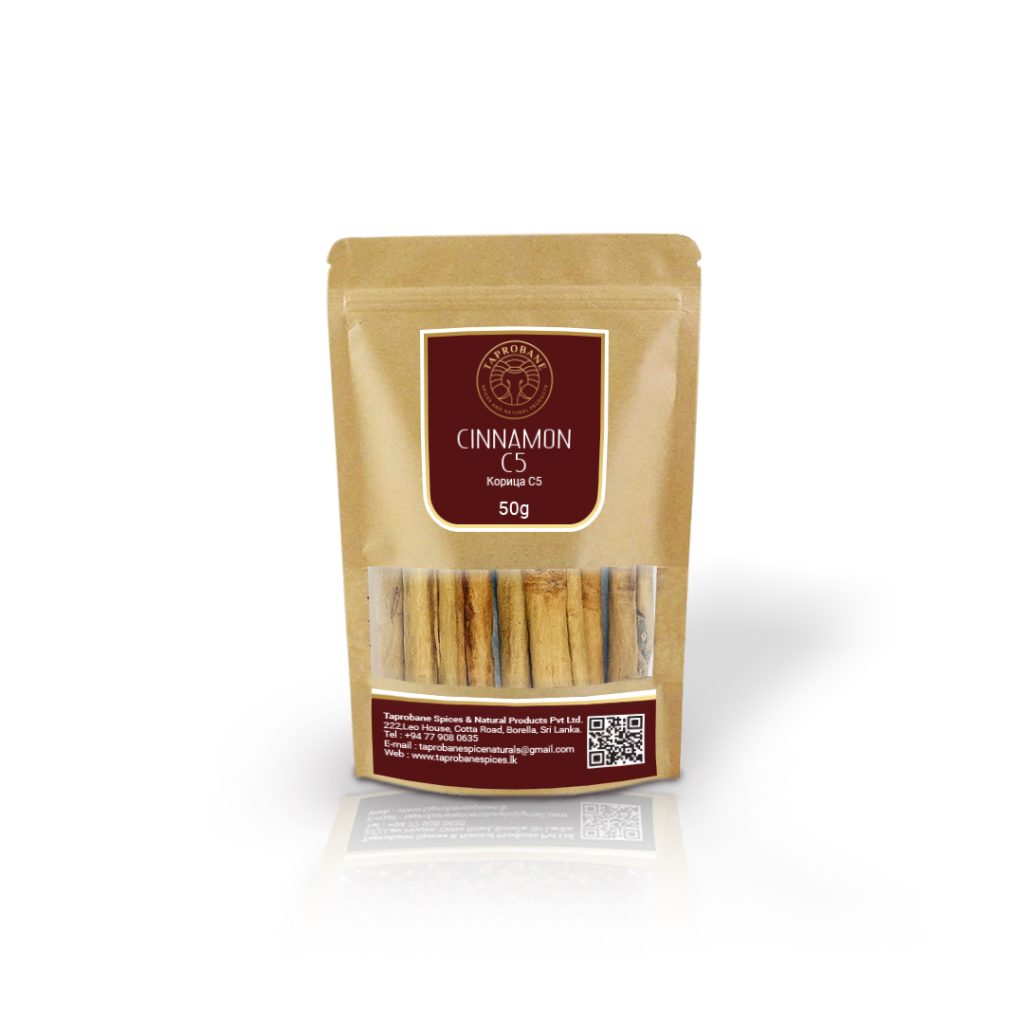Cinnamon C5

Cinnamon Nutrition
According to U.S. department of agriculture, a teaspoon of ground cinnamon weighing 2.6g contains:
➢ Energy 6.42g
➢ Carbohydrate 2.1g
➢ Calcium 26.1mg
➢ Iron 0.21g
➢ Magnesium 1.56g
➢ Phosphorus 1.66g
➢ Potassium 11.2g
It also contains vitamin A, B, K.
And also, cinnamon contains coumarin. It is a natural flavor. If say something about chemical
properties of cinnamon, in cinnamon bark oil has a high level of Cinnamaldehyde and
cinnamon leaf oil has higher level of Eugenol content.
Values of Cinnamon
Cinnamon may provide some health benefits, according to scientific research. Strong antibacterial, antifungal, antiviral and full of antioxidant -Cinnamon is widely utilized in Chinese herbal medicine and is said to have numerous therapeutic and calming effects. Cinnamon’s characteristic aroma and flavor are derived from cinnamaldehyde, an essential oil found in the bark. Cinnamaldehyde has antibacterial, antiviral, and antifungal effects.
➢ Reduce blood sugar level in human body
➢ Protecting against HIV
➢ Improve digestion
➢ Reduce risk of cancers
➢ Support healthy blood pressure & cholesterol levels
➢ Improves blood circulations
➢ Boosts brain activity & helps with memory loss
➢ Protect against heart diseases
➢ Aid weight loss
➢ Effective against arthritis and osteoporosis
Side effects of Cinnamon
➢ May cause liver damage
➢ May cause low blood pressure
➢ May cause breathing problems
➢ Toxicity – because, coumarin content
Quality Specifications of Cinnamon
Quality requirement of cinnamon quills:
| Characters | Requirement |
|---|---|
| Smell | Inherited smell of cinnamon |
| Color | Light brown to brown |
| Moisture content | 14% for quills and 12% for other products |
| Volatile oil | 1% for quills and 0.7% for other products |
| No. of dead insects (no. Kg) | 4 |
| Mammalian fecal matter (mg, Kg) | 2 |
| Other fecal matter (mg, kg) | 4 |
| Pieces with fungus attacked (% weight) | 1 |
| Pieces with insects’ damages (%weight) | 1 |
| Other extraneous matter (%weight) | 5 |
Source: Department of export agriculture
Different forms and grades of cinnamon:
| Cinnamon bale form | Alba C5 special C3, C4 M5, M4, H1, H2, H3 |
| Cinnamon cut form | Alba, C5 special M5, M4 H1, H2 Offcut |
| Cinnamon quillings | Super fine quillings Quillings No 1 |

